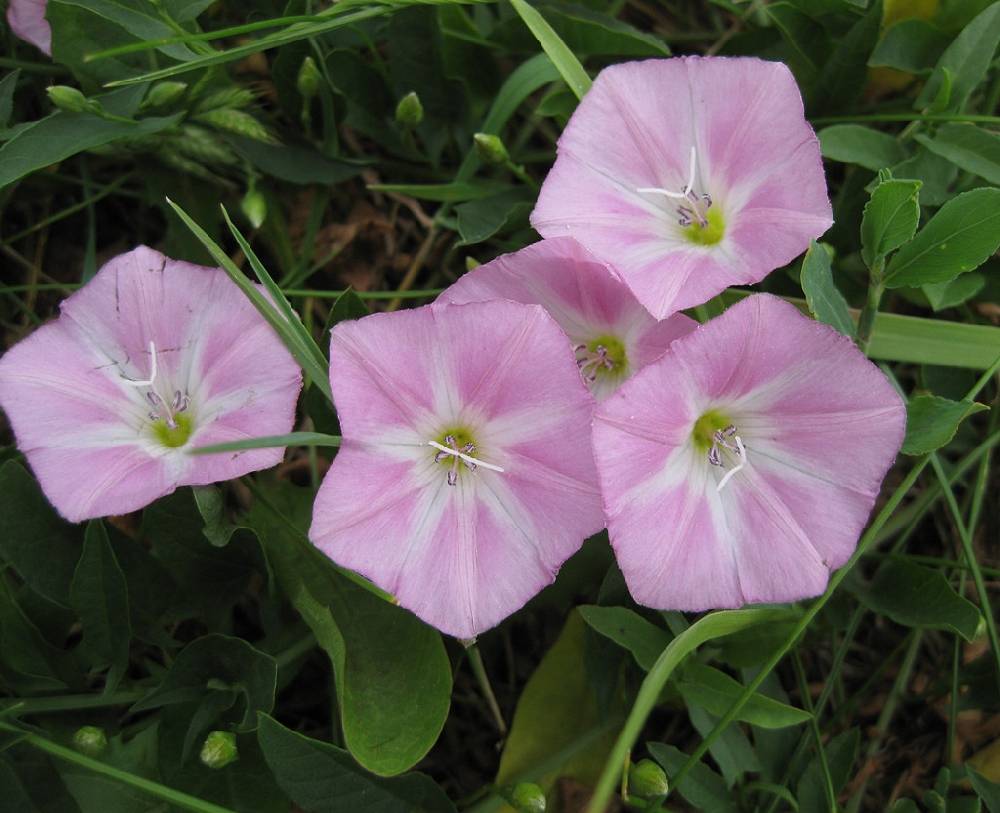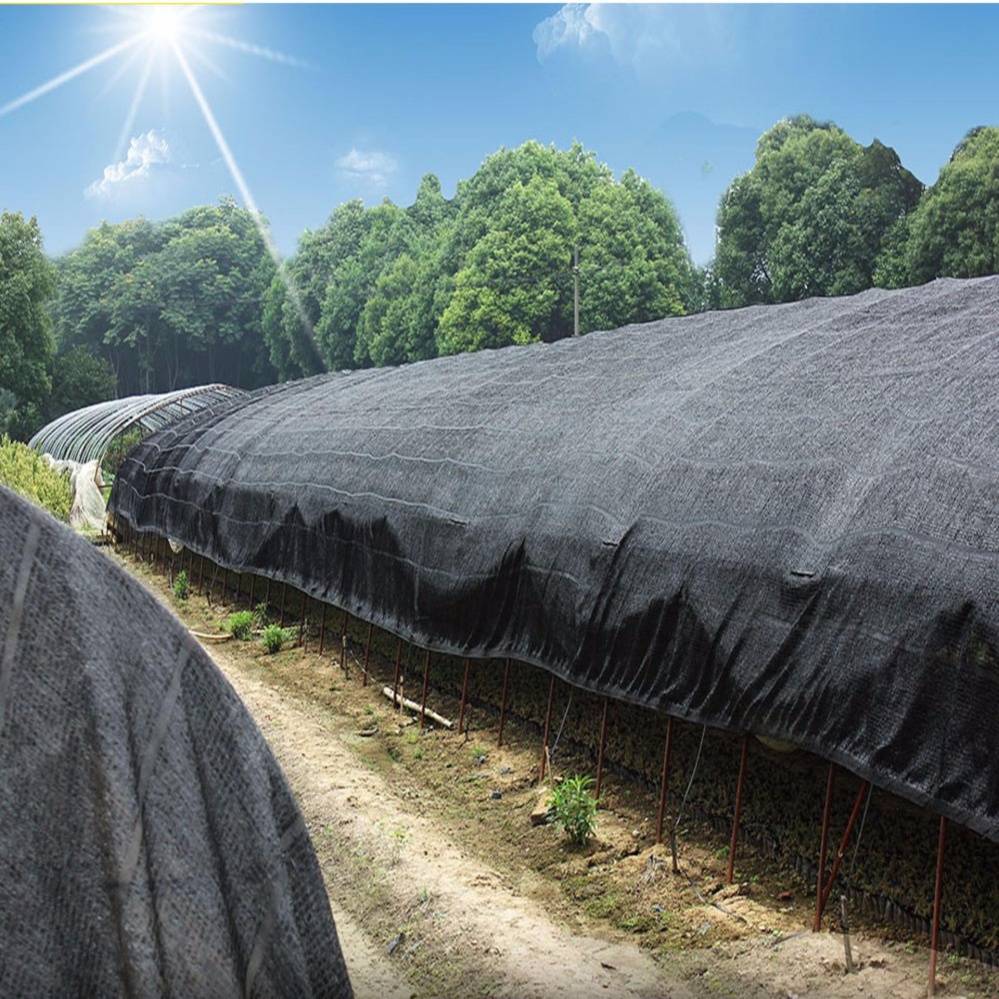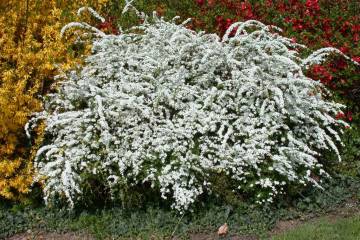How to get rid of bindweed in the garden - modern and folk control measures
Content:
Field bindweed is a climbing plant, the flowering of which is accompanied by the development of beautiful pale pink or snow-white corollas. In the wild, this plant evokes nothing but admiration. However, when it enters the garden plot, this pretty crop becomes the worst weed that interferes with the development of a good harvest. How to get rid of the bindweed on the site forever? In the course of the fight against bindweed, a considerable number of methods for its extermination were invented, but at the same time none of the methods gives guarantees of getting rid of the weed forever. Below is a detailed description of how to deal with a loach in the garden and at the same time not interfere with the normal development of other crops.
What is the danger of the field bindweed in the garden
The bindweed (also called birch, bindweed and dodder) has an extensive root system, represented by long taproots that penetrate deep into the ground, so even when the underground part of this weed is cut, some remains on the site, which negatively affects nearby crops. The field plant has beautiful funnel-shaped pink flowers that bloom in the spring and summer. Each peduncle has 1 to 3 flowers.
Delicate flowers, densely entwining protective structures, have a very deceptive beauty. Thanks to the powerful root system, the bindweed takes away all the moisture present in the ground, thereby provoking the drainage of the soil. This property allows it to survive during dry periods.
The loach weed is a very prolific plant. Its reproduction takes place by means of seeds and roots. The seeds retain the entire set of properties, which allows sprouts to emerge within 3 years, and small pieces of roots left in the soil will easily take root and ensure the development of a new generation of bindweed. In addition, the loach is very fond of garden pests, which, of course, gives the gardener additional problems in the fight against the invasion of parasites.
The bindweed is unpretentious in choosing a habitat; it winds in a nearby hill or even grass. The stalks are attached to the young shoots of cultivated plants and allow them to continue their normal development. The root system pumps out liquid and nutrients from the soil. Scourges grow in the form of a thick cap, which leads to problems with the flow of light to the plants, as a result of which photosynthesis is disrupted and starvation sets in.
It turns out that the bindweed successfully wins for life in the fight against almost any culture. It is also worth noting that the climbing plant during the period of full-scale growth will no longer give up its place under the sun to other types of growth. In this case, the only way out is serious work on unwinding the stems from the bushes.
How to get rid of bindweed in the garden? Simply pulling the bindweed out of the soil and trying to pull it out will damage the crop on which it has settled.Birches also have a habit of intertwining between bushes, which leads to overgrowing of row spacings. For example, if a weed attacked a potato, then during its digging it will be necessary to do additional work - walk with scissors on live bindweed. The same situation will be observed in cases of the occupation of other vegetables, bushes and trees.
Effective ways to get rid of weeds in the garden
There are several effective ways how you can defeat the bindweed, while in all cases the gardener will struggle to show his perseverance. Weeds are often difficult to eradicate, including field bindweed, which should be controlled regularly.
Bindweed can be eliminated by the following methods:
- chemical;
- mechanical;
- biological.
This weed is very persistent, so an integrated approach should be used to control it, which combines several methods of its destruction at once. It is also worthwhile to immediately clarify, since the complete removal of this malicious tenacious weed from the garden is almost impossible, the gardener should tune in to the fight against the consistent application of different techniques.
Chemical
The chemical method of killing weeds is considered the most radical, but it is thanks to powerful drugs that you can get rid of this plant in the event of its mass distribution. Chemical treatment should be carried out in the presence of green mass of bindweed or even at the initial stage of its flowering. As a result of chemical treatment, the plant withers rather quickly (after a few days the weed begins to darken, and after 6-7 days it dries up completely). The procedure will have to be done more than once, since new plants are likely to appear in the near future.
In order to remove the loach from your site for a long time, for example, in the country, you need to use herbicidal preparations. You can fight against a birch tree with the help of such modern drugs as roundup (or its tornado analogs) or a hurricane. This list of products can be found in specialized stores. They are sold as solutions. Getting on the green parts of the substances contained in the preparations, they penetrate inside and reach the root system. After 7-10 days, the weed dies.
These drugs have repeatedly demonstrated their effectiveness, but, unfortunately, they are not selective regarding the purpose of the defeat. That is, if the solution gets on the green areas of garden crops, they will also be negatively affected and die. For this reason, the bindweed that has grown on the site must be processed very precisely - coat the birch foliage with a mixture of chemicals with a small brush. This is painstaking, but fully justified work.
Mechanical
Drastic measures are usually resorted to in extreme cases, so most often gardeners prefer to use environmentally friendly methods of dealing with loach.
How to get bindweed out of the garden forever using available tools? Mechanical methods are often used to eliminate weeds; they are the most simple and understandable even for novice gardeners. The mechanical method of dealing with a birch involves a thorough removal of the plant along with the root system.
In order not to accidentally break off the roots of another culture, it is recommended to use special blades. This tool will allow you to efficiently and accurately remove the loach roots from the soil.
Usually, the processing of the site takes place in the autumn and spring periods. To remove dodder, as this herb is also called among the people, you should carefully loosen the soil, select the roots of the weed from there and burn them. You can also apply the depletion method. To do this, pluck the loach until the green leaves unfold. In this case, it is important to remove the roots to the maximum available depth. The procedure is carried out throughout the season 4-6 times a month. The essence of the method is that the root system ceases to receive nutrients, as a result of which the depletion of the internal potential occurs and, as a result, the death of the plant.
Biological
Now you need to figure out how to deal with bindweed, without resorting to the use of harmful drugs and radical methods of weed control. Siderata - fast emerging densely growing herbaceous growth will help to eliminate bindweed. Siderates include crops such as mustard, rapeseed and clover. They will act as a protective barrier that will prevent the bindweed from developing.
In addition, an additional effective method of weed control is soil mulching. Use organic materials as mulch. For example:
- sawdust;
- straw;
- chips.
After choosing the material, it should be poured onto the surface of the soil (while the layer should be thick enough) for about 11-12 months. After that, dig up the site and remove the remaining birch roots from the ground.
Full shading of the area
Another rather simple and effective, but not very profitable from an economic point of view, method of weed control is shading the site. This method will be justified in the case of a large land area, part of which can be temporarily decommissioned. Usually, the ground is covered with materials that do not allow sunlight to pass through.
This method, as a rule, shows higher efficiency, in contrast to the same mulching of the soil, as a result of which the birch, although it loses strength, is not completely destroyed. The same effect is observed in cases of planting plants on the site, which, by their presence, create a shadow. They can block the bindweed's path to development for several seasons, but they will not completely eliminate it.
What materials are suitable
The following materials are used to darken the area:
- boards;
- plywood;
- dark film;
- roofing material;
- old oilcloths.
Using these materials, you can quite effectively remove the weed from the garden. Already at the end of the first season, the site will be cleared of weeds.
Which plants are suitable
Garden shading can be organized without taking it out of circulation and without the use of special materials. If the weed has not yet had time to grow, you can plant a pumpkin or zucchini in the garden. The foliage of these crops will create a reliable shade, and their powerful bushes will not be damaged by the growth of birch trees.
Folk methods of struggle
Of the folk methods, gardeners most often resort to using a saline solution. The remedy is prepared as follows:
- Pour table salt (1.5 kg) into water (10 l).
- In hot dry weather, spray the weed with the resulting solution.
- Weed after spraying.
If the weed is still strongly overgrown, then the area on which it grows can be well moistened with hot water. Another popular method of struggle is to treat the area with a concentrated soda solution. In this case, watering is carried out at a 20-25 cm distance from the plantings.
To destroy excess grass, you need to regularly use various methods of dealing with it. If they are ineffective, experienced gardeners recommend getting rid of weeds by using more radical methods, for example, using chemical treatment.






















